A New Way to Grow in the Hardest Places in Africa and What It Could Mean for Millions
You have probably seen it on social media. A barren desert, and then, almost like magic, lush green crops appear in just hours. It is called “nano clay,” or sometimes “desert soilization.” It is the kind of story that captures our imagination because it feels like a miracle. But here is the question we need to ask together: Is it real? Can it work? And most importantly, can it change lives across Africa?
Let’s sit with these questions and walk through them honestly, because the truth is both more inspiring and more complicated than the headlines.
What is this “liquid natural clay”?
At its heart, Liquid Natural Clay, or LNC, is very simple. Clay is ground down into ultra-fine particles, then mixed with water until it pours like milk. When this liquid is sprayed onto sandy soil, it coats each grain of sand in a thin layer of clay. Suddenly, sand that once could not hold a drop of water begins to behave like fertile soil.
In China, a different but related method, called “soilization,” uses a plant-based binder sprayed onto sand to give it structure. Both approaches are trying to answer the same question: how can we make desert sand act like soil?
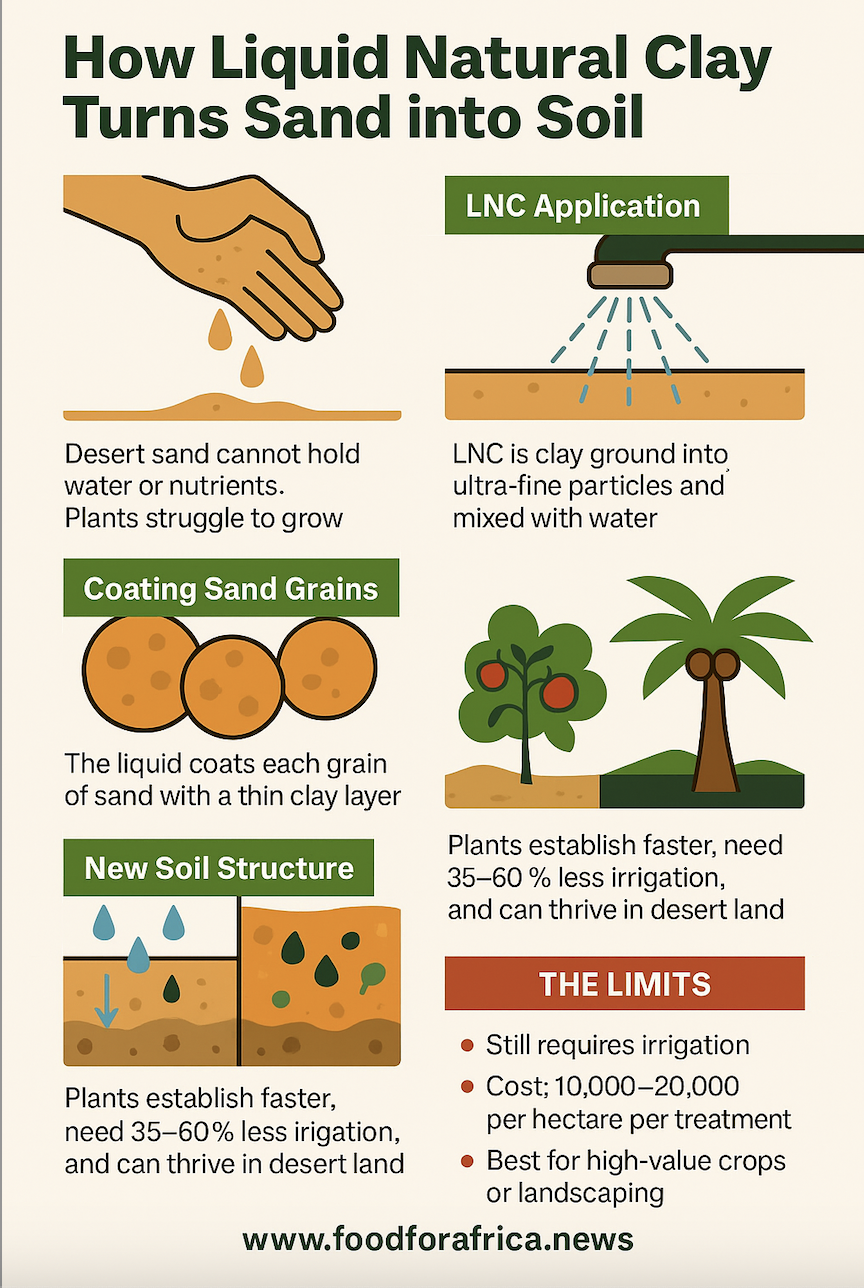
Has it been done before?
Yes, and no.
- In the United Arab Emirates and Saudi Arabia, Liquid Natural Clay has been used on landscaping, golf courses, and even orchards. Cities such as Masdar report saving nearly half the water they once used.
- In the United States, the University of Arizona is running a five-year trial on date palms, and an agricultural company has already planted large blocks of Medjool dates in Arizona using LNC.
- In China, researchers have reported greening parts of the Ulan Buh Desert using their “soilization” method. But scientists are still debating the long-term evidence and asking for more open data.
- In Africa, the conversations have started. Announcements have been made. Yet clear, independent, farm-level results are still very few.
What does it cost?
Now, let’s talk about money because that is where dreams meet reality. Treating land with LNC costs between $10,000 and $20,000 per hectare per treatment. Some competitors claim to do it cheaper, around $10,000 every five years.
That is far too much for most small farmers. For now, this technology is being used by estate farms, cities, and high-value crop growers.
What can grow with it?
The experiments so far have shown success with:
- Tomatoes and leafy greens
- Date palms in Arizona and the Gulf
- Turfgrass and landscaping trees in cities
The principle is the same. Once the sand holds water and nutrients, almost any crop suited to the climate can take root.
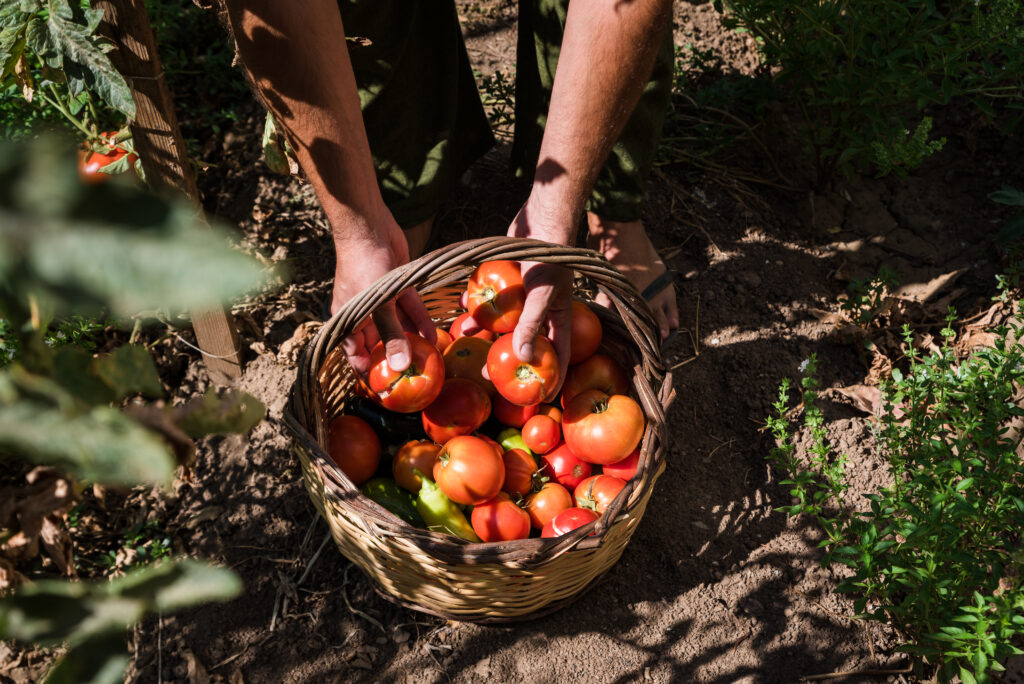
What are the benefits?
When it works, the benefits are clear.
- Farmers and landscapers report 35 to 60 percent less water use
- Roots grow faster and plants establish more quickly
- Deserts can host patches of life where there was only sand
That is a powerful vision.
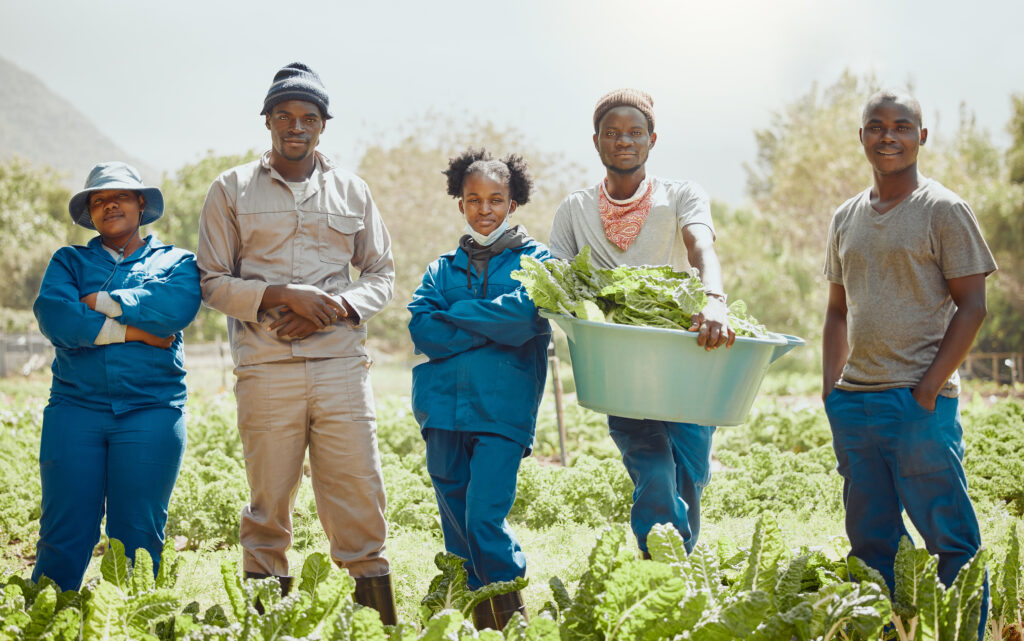
What are the risks?
But let’s not shy away from the limits.
- It still requires irrigation. There is no escaping the fact that water must come from somewhere, whether wells, canals, or reservoirs
- It is expensive. Without subsidies or government support, most smallholders cannot afford it
- It may need re-treatment. One spray will not last forever
- We do not yet know everything. Soil biology, salinity, and long-term sustainability are still being studied
Is it realistic for Africa?
Here is the truth. LNC and soilization are not silver bullets. They will not make the Sahara bloom overnight. They will not feed entire nations on their own.
But for carefully chosen projects such as irrigated date orchards, high-value vegetable farms near cities, or government landscaping programs, they can play a part in Africa’s agricultural future.
How can it be started?
The practical way forward is to begin small.
- Choose one block of sandy land with reliable water
- Measure everything before you start: yields, water use, soil quality
- Treat part of the block and leave another part untreated as a control
- Grow a high-value crop that can justify the investment
- Track results for at least two seasons before thinking bigger
What happens after treatment?
Even after sand is treated, water is still the key. These methods make land hold water better. They do not make water appear. In North Africa, many desert projects rely on fossil aquifers that do not refill. That is a hard truth.
The bottom line
What we are witnessing in these videos is not fantasy. It is science, and like all science, it comes with limits, costs, and the need for patience.
This is not a quick fix for hunger. But it can be one tool, among many, in the fight for food security. And what I know for sure is this: every innovation that helps us grow food where we thought it was impossible is worth our attention.
Sources
Desert “Soilization”: An Eco‑Mechanical Solution to Desertification — engineering.org.cn engineering.org.cn
Sand‑to‑soil conversion test successful in Chinese desert — China’s Ministry of Agriculture & Rural Affairs / Xinhua News english.moa.gov.cn
Evaluation of the Water Retention Capacity of a Pioneering Sustainable Liquid Natural Clay — SpringerLink (conference paper) SpringerLink+1
Liquid Nanoclay: Synthesis and Applications to Transform an Arid Desert into Fertile Land — MDPI / Soil Systems MDPI+1
Sci‑tech innovation turns desert sands into arable land — People’s Daily Online (Xinhua) People’s Daily
Growing in the desert: from sand to fertile soil — Hortidaily article Hortidaily
Characteristics of soil water and salt spatial differentiation along the Yellow River section of Ulan Buh Desert and its causes — Journal of Desert Research geores.com.cn
Soil water carrying capacity of vegetation in the northeast of Ulan Buh Desert, China — Frontiers in China / published article Hep Journals
China’s Inner Mongolia promotes science-based desertification control — ChinaDaily / People’s Daily reports China Daily Regional
Taklimakan Desert has a new method to convert sand into soil — TianshanNet report english.ts.cn
ABOUT DESERT CONTROL (Liquid Natural Clay / LNC) — Desert Control / Soyl official site desertcontrol.com+1
Stabilization of drifting sands using micro silica‑lime‑clay mixture as a mulch — Arabian Journal of Geosciences SpringerLink
Desert Soilization: Transforming Arid Landscapes into Fertile Oases — Egyptian Journal of Agricultural Research (editorial) EKB Journals+1










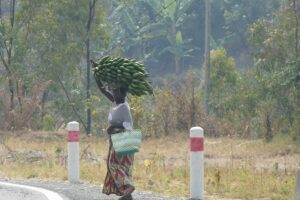
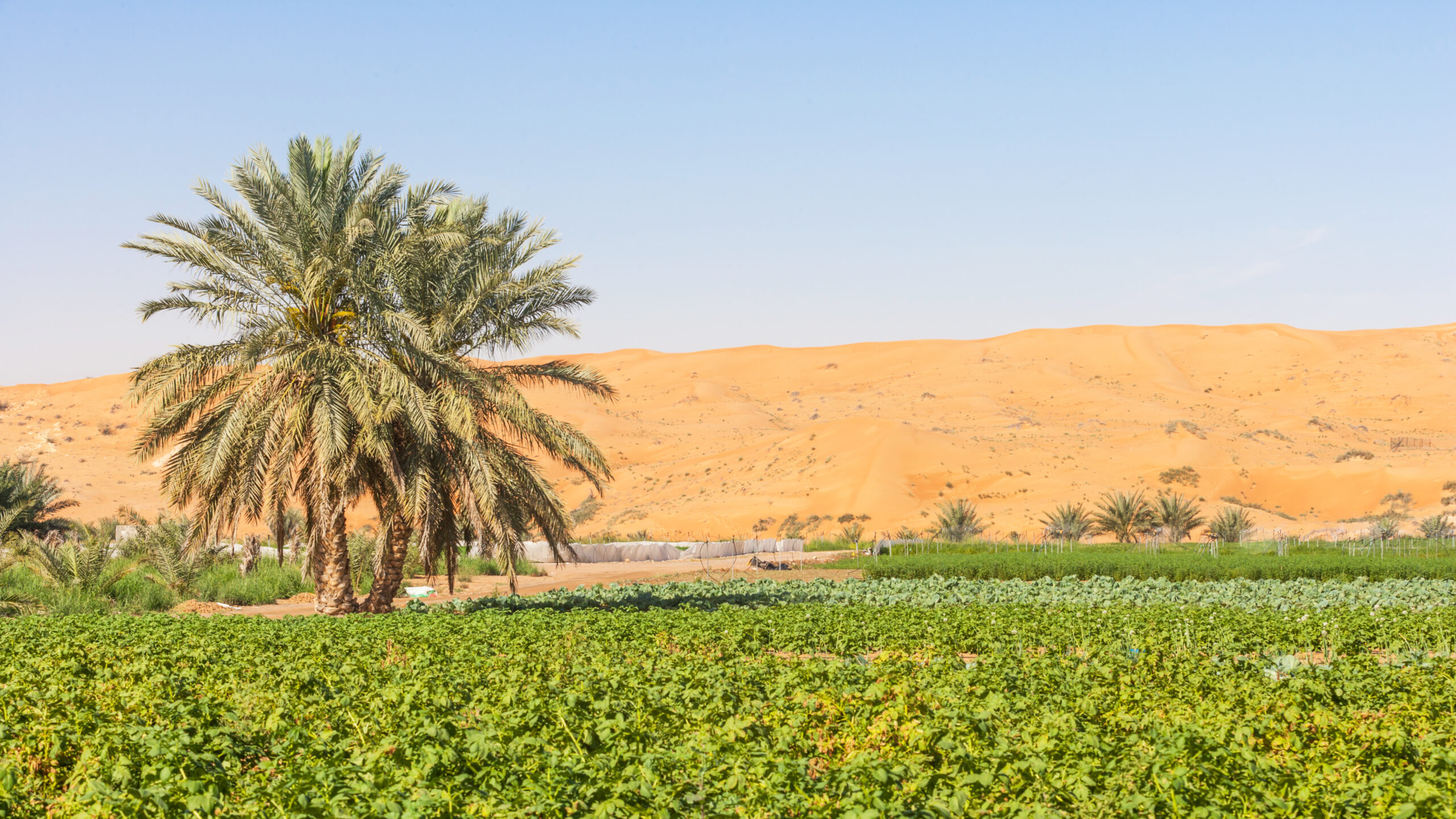



Thank you for posting this.
This is an excellent read. Science at its best trying to help feed the world.
Thank you for your research into this new possibility of growing crops in deserts.